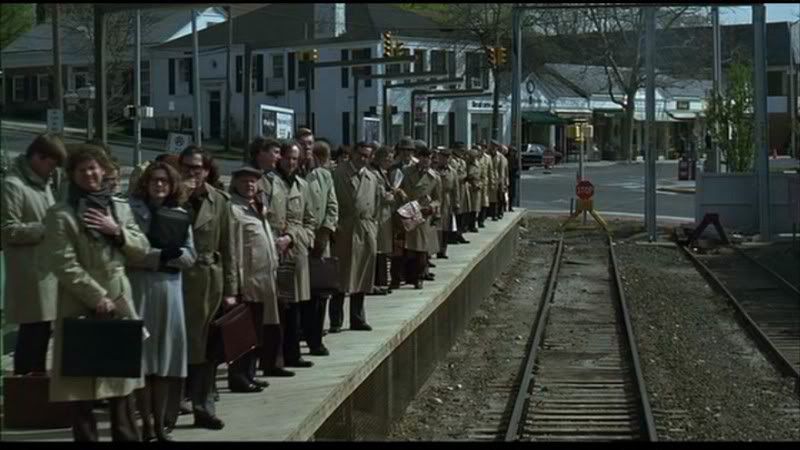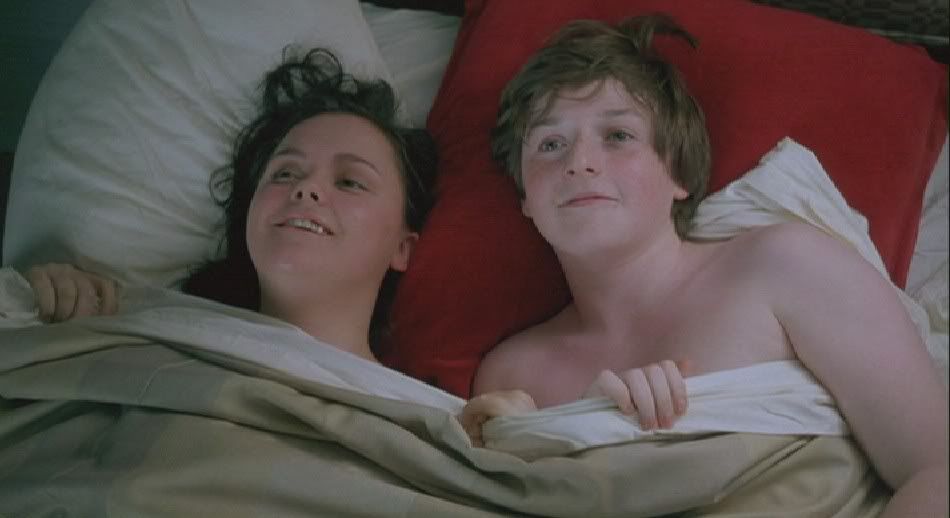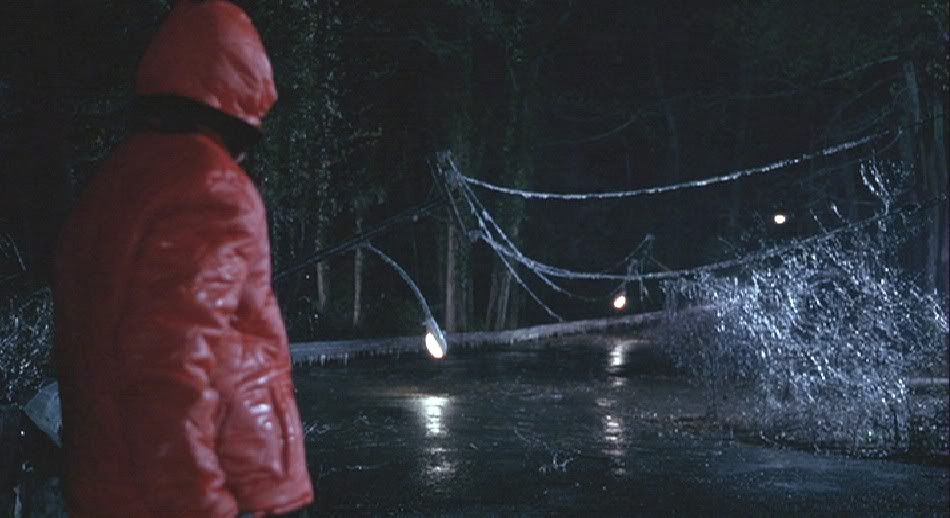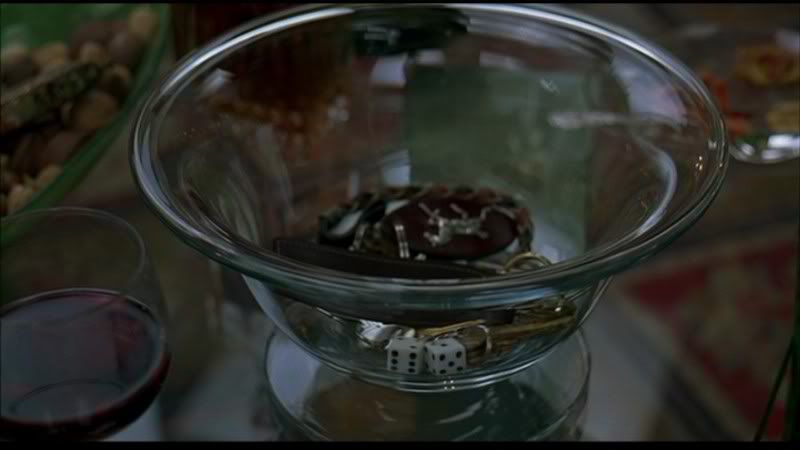By Andrew Chan As an NYU-educated Taiwanese filmmaker, Ang Lee seemed to make it clear with his 1992 debut that his concerns were both Eastern and Western. Only a few years on the heels of Amy Tan’s bestselling The Joy Luck Club, Pushing Hands and its commercially successful follow-up, The Wedding Banquet -- two films which were mainstream in their temperament, but bold in their bilingualism -- inserted themselves into an environment increasingly hospitable to Asian-American immigrant narratives. These first films were among the very few of their time that were interested in seriously examining the ways in which Chinese and Westerners interact in today’s world, and it is difficult to know what Lee could have contributed to the stunted development of Asian-American cinema had he mined this subject further. Instead of maintaining the intimate, personal tone of what would later be dubbed as his “Father Knows Best” trilogy, Lee went on to balance his first three modestly made Chinese-language films with three prestigious English-language ones, surprising viewers with how seamlessly he assimilated into a diverse set of quintessentially Western milieus. Some regarded his choice of material as if it were an astonishing stunt, because while Europeans from Fritz Lang all the way down to Milos Forman had experienced great success in Hollywood, no Asian director in history had ever even attempted to embrace Americanization on quite this level. Though Hong Kong’s Peter Chan (The Love Letter) and mainlander Chen Kaige (Killing Me Softly) have subsequently tried to pull off their own breakthroughs, Lee remains the only contemporary Chinese filmmaker to have integrated completely into the American movie industry.
As an NYU-educated Taiwanese filmmaker, Ang Lee seemed to make it clear with his 1992 debut that his concerns were both Eastern and Western. Only a few years on the heels of Amy Tan’s bestselling The Joy Luck Club, Pushing Hands and its commercially successful follow-up, The Wedding Banquet -- two films which were mainstream in their temperament, but bold in their bilingualism -- inserted themselves into an environment increasingly hospitable to Asian-American immigrant narratives. These first films were among the very few of their time that were interested in seriously examining the ways in which Chinese and Westerners interact in today’s world, and it is difficult to know what Lee could have contributed to the stunted development of Asian-American cinema had he mined this subject further. Instead of maintaining the intimate, personal tone of what would later be dubbed as his “Father Knows Best” trilogy, Lee went on to balance his first three modestly made Chinese-language films with three prestigious English-language ones, surprising viewers with how seamlessly he assimilated into a diverse set of quintessentially Western milieus. Some regarded his choice of material as if it were an astonishing stunt, because while Europeans from Fritz Lang all the way down to Milos Forman had experienced great success in Hollywood, no Asian director in history had ever even attempted to embrace Americanization on quite this level. Though Hong Kong’s Peter Chan (The Love Letter) and mainlander Chen Kaige (Killing Me Softly) have subsequently tried to pull off their own breakthroughs, Lee remains the only contemporary Chinese filmmaker to have integrated completely into the American movie industry. Emerging just as the Taiwanese New Wave was making its greatest strides, inventing its own language, and committing itself to the exploration of national identity, Lee shed any association he might have had with the aims of his countrymen. He was either extremely wide-ranging in his genre tastes, or he was creating a career right out of a film-school textbook, aligning himself with Hollywood models such as screwball comedy (The Wedding Banquet), classy period pieces (Sense and Sensibility), and grim social satire (The Ice Storm). Though Lee’s work might seem too polite to be truly divisive, the path he has chosen has inspired varying reactions among critics in the U.S., a fact that has become more obvious with each new film he has made since the turn of the millennium. Among a growing number of American critics, the globalized nature of Lee’s oeuvre has been equated with a lack of coherent vision or distinctive style, those qualities supposedly necessary to any true auteur. Where once his versatility was mistaken for edginess (and seemed, at one point, to be unanimously praised), the way it has secured his Academy pedigree has come to mark him as a cultural dullard -- a fate sealed by the straitjacketed sexuality of Brokeback Mountain and the lukewarm critical response to his by-the-numbers Lust, Caution. Since the twin Oscar successes of Crouching Tiger, Hidden Dragon and Brokeback solidified his status as one of the few celebrity directors of his generation, detractors have been more emboldened to dismiss him as a mere craftsman, a symbol for the regrettable confluence of the arthouse market with safe, mainstream taste.
Emerging just as the Taiwanese New Wave was making its greatest strides, inventing its own language, and committing itself to the exploration of national identity, Lee shed any association he might have had with the aims of his countrymen. He was either extremely wide-ranging in his genre tastes, or he was creating a career right out of a film-school textbook, aligning himself with Hollywood models such as screwball comedy (The Wedding Banquet), classy period pieces (Sense and Sensibility), and grim social satire (The Ice Storm). Though Lee’s work might seem too polite to be truly divisive, the path he has chosen has inspired varying reactions among critics in the U.S., a fact that has become more obvious with each new film he has made since the turn of the millennium. Among a growing number of American critics, the globalized nature of Lee’s oeuvre has been equated with a lack of coherent vision or distinctive style, those qualities supposedly necessary to any true auteur. Where once his versatility was mistaken for edginess (and seemed, at one point, to be unanimously praised), the way it has secured his Academy pedigree has come to mark him as a cultural dullard -- a fate sealed by the straitjacketed sexuality of Brokeback Mountain and the lukewarm critical response to his by-the-numbers Lust, Caution. Since the twin Oscar successes of Crouching Tiger, Hidden Dragon and Brokeback solidified his status as one of the few celebrity directors of his generation, detractors have been more emboldened to dismiss him as a mere craftsman, a symbol for the regrettable confluence of the arthouse market with safe, mainstream taste.
Lee is, by now, a naturalized American both legally and artistically. Could it be that by embracing the aesthetic traditions and social issues of this country, he has, to a certain degree, sacrificed public recognition as an “artist”? Does this response have anything to do with our current investment in the notion of national cinemas, or an underlying expectation that foreign-born auteurs should honor the responsibility of filming their native lands into being? And how much does our bestowal of the label “artist” rely upon our ability to imagine the director deeply enmeshed in (and personally implicated by) the cultural specificities of his material? In a globalized age, where the discussion of a movie’s nationality has become as much of a critical focal point as issues of authorship were at auteurism’s birth, it seems true that Lee fascinates us as someone whose body of work is most accurately described as international, or (perhaps in his estimation) post-“nationality.” In his second English-language film, The Ice Storm, Lee makes his most ostentatious claim to culturally specific insight on American life. But a decade after the film’s release (which was largely ignored at the box office and year-end awards), it still feels like the most mechanical exercise of his hit-and-miss career. Part of the failure must be attributed to the narrative itself, which follows the typical dysfunctions of unhappy suburban families in 1973 Connecticut. Heavy-handed metaphors, frequently banal observations, and a bogus denouement can be blamed on Rick Moody, who wrote the novel on which the film is based, and James Schamus, the long-time Lee collaborator responsible for the Cannes-winning screenplay. But there’s something additionally off-putting about the film’s determined frigidity, its lack of aesthetic personality. What we recognize as skillfulness in the directing lies in its leanness, in the sense that not a moment of storytelling is going to waste; where Pushing Hands was flabby and overextended, The Ice Storm shows Lee maturing in his craft and paring down his approach. But as interested as the film is in the domestic sphere as a stage for private humiliation, there’s very little inner life on display here, and not much moral or emotional riskiness. How could the Moody novel -- famous for being passionate, embittered, and semi-autobiographical -- have been rendered so bloodless on the big screen?
In his second English-language film, The Ice Storm, Lee makes his most ostentatious claim to culturally specific insight on American life. But a decade after the film’s release (which was largely ignored at the box office and year-end awards), it still feels like the most mechanical exercise of his hit-and-miss career. Part of the failure must be attributed to the narrative itself, which follows the typical dysfunctions of unhappy suburban families in 1973 Connecticut. Heavy-handed metaphors, frequently banal observations, and a bogus denouement can be blamed on Rick Moody, who wrote the novel on which the film is based, and James Schamus, the long-time Lee collaborator responsible for the Cannes-winning screenplay. But there’s something additionally off-putting about the film’s determined frigidity, its lack of aesthetic personality. What we recognize as skillfulness in the directing lies in its leanness, in the sense that not a moment of storytelling is going to waste; where Pushing Hands was flabby and overextended, The Ice Storm shows Lee maturing in his craft and paring down his approach. But as interested as the film is in the domestic sphere as a stage for private humiliation, there’s very little inner life on display here, and not much moral or emotional riskiness. How could the Moody novel -- famous for being passionate, embittered, and semi-autobiographical -- have been rendered so bloodless on the big screen? The Ice Storm tries its best to identity itself with the dark heart of the early ’70s; it has the look of Boogie Nights and Almost Famous with all the exuberance (including the songs) scoured out. But, more than anything, it is unmistakably an artifact of the ’90s, a trendy dissection of upper-middle-class American values that will forever be linked to more entertaining works such as American Beauty and the TV series Picket Fences. Hell-bent on exposing raging libidos and lonely hearts underneath all the good breeding, the film divides a cast of WASPy veterans and soon-to-be-famous young actors into two families, both plagued by midlife crisis, extramarital sex, and the trials of puberty. Structured to give full impact to Lee’s juxtapositions of the older and younger generations, the film shows adults scrambling to adopt the freedoms of the hippie movement, and ending up looking no more grown-up than their lonely, sexually experimental kids. Early exposition builds toward the film’s second half, which chronicles the disintegration of the characters’ personal and social worlds during a night of bad weather. Lee’s reversal of the “Father Knows Best” trilogy’s filially pious representations of its elders is tempered by a conservative, fire-and-brimstone approach to morality. In an embarrassing, climactic invocation of the mythic, Nature exacts atonement for sexual sin and poor parenting, and an innocent is sacrificed in order to reaffirm the love underlying all familial relationships.
The Ice Storm tries its best to identity itself with the dark heart of the early ’70s; it has the look of Boogie Nights and Almost Famous with all the exuberance (including the songs) scoured out. But, more than anything, it is unmistakably an artifact of the ’90s, a trendy dissection of upper-middle-class American values that will forever be linked to more entertaining works such as American Beauty and the TV series Picket Fences. Hell-bent on exposing raging libidos and lonely hearts underneath all the good breeding, the film divides a cast of WASPy veterans and soon-to-be-famous young actors into two families, both plagued by midlife crisis, extramarital sex, and the trials of puberty. Structured to give full impact to Lee’s juxtapositions of the older and younger generations, the film shows adults scrambling to adopt the freedoms of the hippie movement, and ending up looking no more grown-up than their lonely, sexually experimental kids. Early exposition builds toward the film’s second half, which chronicles the disintegration of the characters’ personal and social worlds during a night of bad weather. Lee’s reversal of the “Father Knows Best” trilogy’s filially pious representations of its elders is tempered by a conservative, fire-and-brimstone approach to morality. In an embarrassing, climactic invocation of the mythic, Nature exacts atonement for sexual sin and poor parenting, and an innocent is sacrificed in order to reaffirm the love underlying all familial relationships. There is, admittedly, a certain beauty in the film’s pacing during its first half, in the matter-of-fact way it tries to inform us of the momentous transitions both the characters and the society are undergoing, and also in its avoidance of fetishizing period detail. But at some point the audience has the sensation of repeatedly being jerked forward and back. A framing device involving the Marvel comic Fantastic Four is introduced early on, rather heavy-handedly, only to disappear and then occasionally resurface for no apparent reason. The film’s social and political critique also falls by the wayside, relegated to brief glimpses of Nixon speeches on TV and fleeting mentions of Deep Throat, alternative religion, and the Vietnam War. Having eliminated almost every aspect that might be considered peripheral, Lee maintains a tight focus on the two families, and yet all of the characters remain emotionally mysterious to us. While admirers of the film usually point to the ensemble cast as one of its main virtues, it’s difficult to look past how the majority of the lead performances rely on the same tics and tendencies on which many of these actors have built their entire careers. In the roles of the wives, Joan Allen is frozen in the wounded sternness that has been her shtick for years, while Sigourney Weaver spends her scenes with her best mean face on, lips pursed, fumbling the delivery of her bitchiest lines. As the philandering husband, Kevin Kline puts so much effort into blending the comic and the tragic, the sympathetic and the repugnant, that he ends up a blur. The children turn out to be even harder to tolerate: Christina Ricci plays morbid and sardonic, Elijah Wood is doe-eyed, and Tobey Maguire unleashes the endearing, introverted nerdiness he would use in the Spider-Man movies. When the unsung Jamey Sheridan, as a bereaved father, finally beats the diva-thespians at their own game by delivering the kind of emotional authenticity that cannot be faked, it feels as if he has wandered in off another set.
There is, admittedly, a certain beauty in the film’s pacing during its first half, in the matter-of-fact way it tries to inform us of the momentous transitions both the characters and the society are undergoing, and also in its avoidance of fetishizing period detail. But at some point the audience has the sensation of repeatedly being jerked forward and back. A framing device involving the Marvel comic Fantastic Four is introduced early on, rather heavy-handedly, only to disappear and then occasionally resurface for no apparent reason. The film’s social and political critique also falls by the wayside, relegated to brief glimpses of Nixon speeches on TV and fleeting mentions of Deep Throat, alternative religion, and the Vietnam War. Having eliminated almost every aspect that might be considered peripheral, Lee maintains a tight focus on the two families, and yet all of the characters remain emotionally mysterious to us. While admirers of the film usually point to the ensemble cast as one of its main virtues, it’s difficult to look past how the majority of the lead performances rely on the same tics and tendencies on which many of these actors have built their entire careers. In the roles of the wives, Joan Allen is frozen in the wounded sternness that has been her shtick for years, while Sigourney Weaver spends her scenes with her best mean face on, lips pursed, fumbling the delivery of her bitchiest lines. As the philandering husband, Kevin Kline puts so much effort into blending the comic and the tragic, the sympathetic and the repugnant, that he ends up a blur. The children turn out to be even harder to tolerate: Christina Ricci plays morbid and sardonic, Elijah Wood is doe-eyed, and Tobey Maguire unleashes the endearing, introverted nerdiness he would use in the Spider-Man movies. When the unsung Jamey Sheridan, as a bereaved father, finally beats the diva-thespians at their own game by delivering the kind of emotional authenticity that cannot be faked, it feels as if he has wandered in off another set.
In the late ’40s and early ’50s, the triumvirate of Eugene O’Neill, Tennessee Williams, and Arthur Miller depicted families going down in flames on a grand, tragic scale. American theater of that period set a new tone for the way we think about family dysfunction, producing what are still perhaps the nation’s most unsettling artistic explorations of the subject. Lee’s film is the aesthetic opposite of that tradition; austere rather than histrionic, self-consciously subdued rather than cathartic, its tone (not to mention its recurring train imagery) invites some viewers to make a false comparison to the serenity of Ozu. On the one hand, we can be grateful that The Ice Storm not only steers clear of what has become clichéd in great American drama, but that it also never falls prey to the irony that would make American Beauty so popular two years later (and would soon become the dominant tone for dark family portraits in American movies). In better hands, though, the film’s chilly disposition could have had the brutal yet poignant effect of Raymond Carver minimalism; instead it manages to make the clinical feel gratuitous, as if Lee were using Ordinary People as his model. In comparison to the warm humanism that characterizes the best of his work, the coldness immediately registers as an affectation, making the final plot twist’s attempt at tragedy all the more feeble and calculated. Though it’s impossible to know if the tepidness of this film has anything to do with Lee’s status (at the time) as a newcomer to America, one can’t help but note that its distance and disinterestedness fit alongside certain conceptions of that status. As in the work of another American-educated Taiwanese filmmaker, Edward Yang, The Ice Storm has an all-encompassing sympathy for both sides of the generational divide, a quality one might mistake for objectivity; what it lacks is Yang’s depth. Since he started making films in the English language, Lee has continually tried to disappear into his work, to render his own voice inconsequential -- an approach that flies in the face of auteurist values but is not, in itself, illegitimate. Despite this, it still seems that seeing America through the eyes of an immigrant should bring us some sort of new information about ourselves, new ways of evaluating our culture; at the very least, it shouldn’t make us even more bored of our own problems. But when the method is as culturally non-specific and stubbornly universalizing as Lee’s is both here and elsewhere, we end up reverting to the same old clichés about America, the world, and human nature.
Though it’s impossible to know if the tepidness of this film has anything to do with Lee’s status (at the time) as a newcomer to America, one can’t help but note that its distance and disinterestedness fit alongside certain conceptions of that status. As in the work of another American-educated Taiwanese filmmaker, Edward Yang, The Ice Storm has an all-encompassing sympathy for both sides of the generational divide, a quality one might mistake for objectivity; what it lacks is Yang’s depth. Since he started making films in the English language, Lee has continually tried to disappear into his work, to render his own voice inconsequential -- an approach that flies in the face of auteurist values but is not, in itself, illegitimate. Despite this, it still seems that seeing America through the eyes of an immigrant should bring us some sort of new information about ourselves, new ways of evaluating our culture; at the very least, it shouldn’t make us even more bored of our own problems. But when the method is as culturally non-specific and stubbornly universalizing as Lee’s is both here and elsewhere, we end up reverting to the same old clichés about America, the world, and human nature.
Images/Sound/Extras: While The Ice Storm may not warrant Criterion canonization (the cover goes so far as to proclaim it “one of the finest films of the nineties”), the new two-disc set makes the best possible case for the film in its extensive and informative supplemental material. Lee is not known for his electrifying personality, but the extras reveal his interesting and conscientious mind for cinema. A commentary featuring Lee and producer-screenwriter James Schamus begins with a good-natured “fuck you” to the question of how a Taiwanese director can make a movie about Americans. The lively discussion gives fans a chance to listen to their friendly rapport, which has been the basis for one of contemporary cinema’s most successful and enduring film collaborations. Other features include deleted scenes; a documentary of (mostly dull) reminiscences from the cast; interviews with the cinematographer, production designer, and costume designer; and a recent conversation between Lee and Schamus at New York’s Museum of the Moving Image. All this, in addition to an excellent transfer and Criterion’s best cover design so far this year, makes for a handsome (if not quite extraordinary) set.
Andrew Chan is a poet and film critic currently studying at UNC-Chapel Hill. He is the creator of the blog Movie Love.
Tuesday, May 1, 2007
The Criterion Collection #426: The Ice Storm
Labels:
Andrew Chan,
Ang Lee,
The Ice Storm
Subscribe to:
Post Comments (Atom)
No comments:
Post a Comment